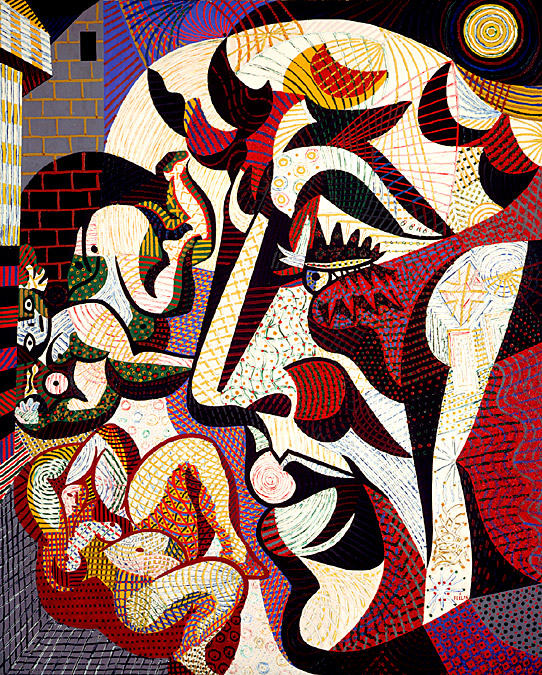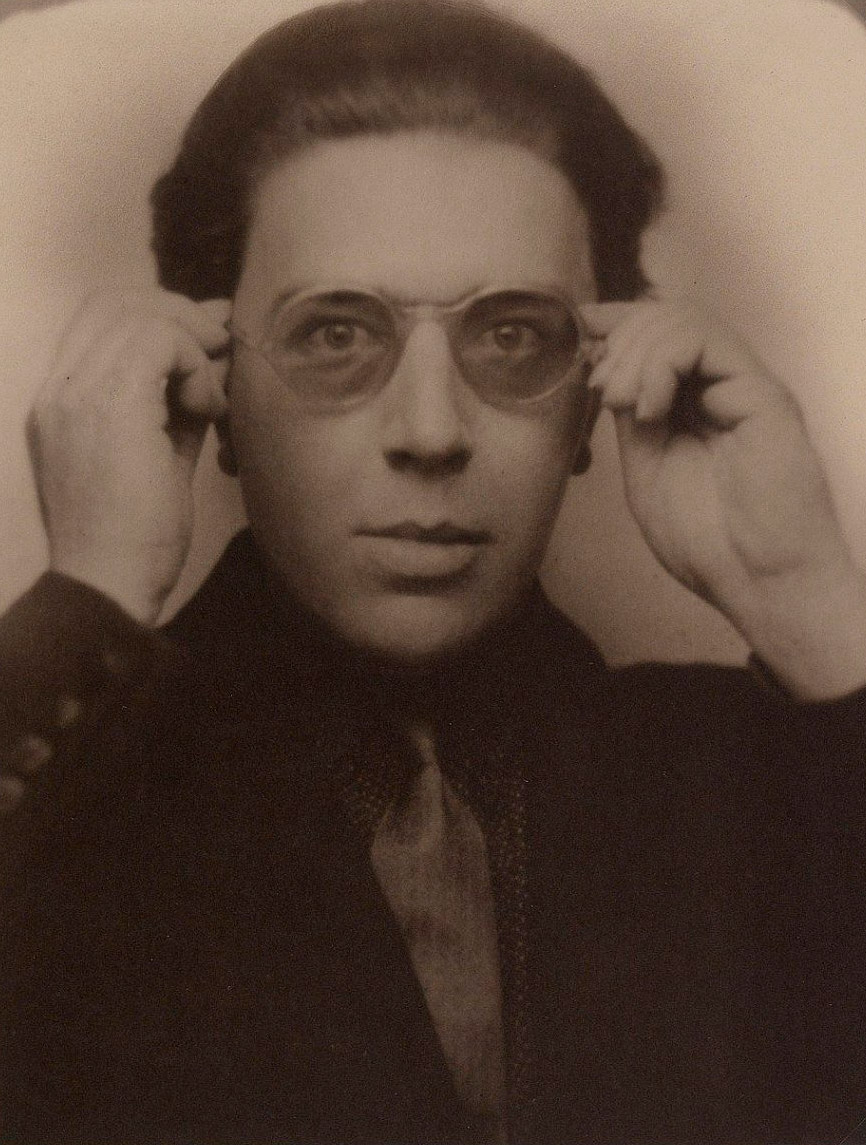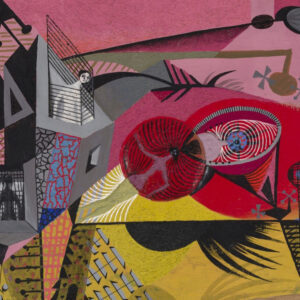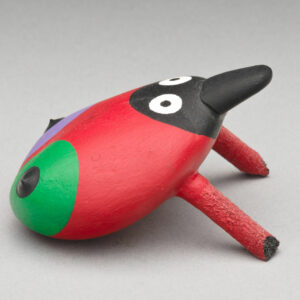Mad Love (Homage to André Breton) 1954
![Alfred Pellan, L’amour fou (Hommage à André Breton) (Mad Love [Homage to André Breton]), 1954](https://www.aci-iac.ca/wp-content/uploads/2023/01/alfred-pellan-mad-love.jpg)
Alfred Pellan, L’amour fou (Hommage à André Breton) (Mad Love [Homage to André Breton]), 1954
Oil on canvas, 115.5 x 80 cm
Montreal Museum of Fine Arts
L’amour fou (Hommage à André Breton) (Mad Love [Homage to André Breton]) reflects Pellan’s engagement with Surrealism, a fascination of his for more than forty years, as well as his friendship with André Breton (1896–1966), one of the movement’s key writers. A portrait that somewhat resembles Breton sits toward the bottom of the canvas, which is dominated by red and cut with splashes of green, yellow, black, and white. A female figure in an impossibly contorted pose stands on top of the male face, stabilized on the right by a massive dismembered hand.


The composition reveals Pellan’s ability to create something new and highly personal based on his own interpretation of l’amour fou—or “mad love,” as defined by Breton in his 1937 book of that name. Collapsing the barrier between carnal and spiritual love, this Surrealist concept brings together desire, freedom, and beauty; it is an ethos that illuminates the transcendent in everyday encounters.
Women played an important symbolic role in this idea. Within Surrealism, as the critic Katharine Conley has noted, women were viewed as “powerful, capable of intuitive leaps, and able to enter the unknown” in ways that evaded their masculine counterparts. However, while women were pivotal in the Surrealist universe, they were often relegated to lesser roles as objects within artworks.
Art historian Reesa Greenberg has argued that Pellan does not overly emphasize the woman as an object of desire in Mad Love. Rather, he highlights her role in the delicate balance of male and female. While the two entities are not physically fused, there is a certain unity conveyed through their placement. Pellan further underscores this enmeshment between genders by using the same colour and pattern on the skin of his male and female forms; to Greenberg, these choices allude to “their metamorphosis into one being.”
Pellan pays special attention to the sexualized female form here, twisting and distorting the figure to emphasize her breasts, her pubic area, her flowing hair, and her long legs. But the artist also alludes to the Surrealist idea that the body can be a conduit for change. In contrast with the fluid lines of his female counterpart, the male seems immobilized—trapped by the planks below and the hand to his right.

 About the Author
About the Author
 More Online Art Books
More Online Art Books
 Acknowledgements
Acknowledgements